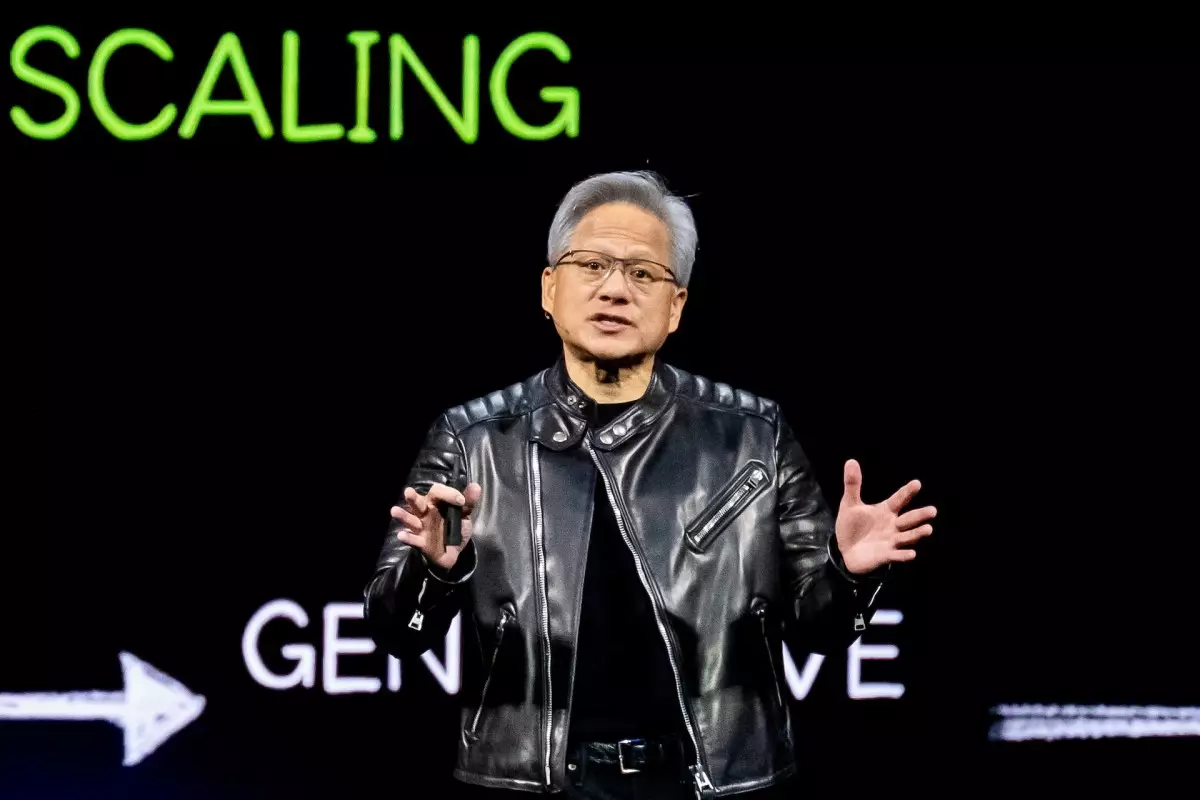In an ambitious move that marks a significant turning point for the semiconductor industry, Nvidia has announced plans to establish over one million square feet of manufacturing space dedicated to the production of AI chips in the United States. This bold initiative, which encompasses facilities in Arizona and Texas, aims not merely to bolster domestic manufacturing capabilities but also to respond to the rapidly escalating demands for AI technologies across various sectors. Nvidia’s strategy reflects a newfound commitment to localize production and mitigate reliance on overseas manufacturing, particularly in an era marked by global supply chain vulnerabilities.
The commencement of production for Nvidia’s Blackwell chips at TSMC’s facilities in Phoenix, Arizona, signals a progressive step toward increasing American manufacturing prowess in semiconductor technology. Collaborating with significant players like Amkor and SPIL for packaging and testing indicates Nvidia’s determination to establish a robust ecosystem that supports its operations. The construction of supercomputer manufacturing plants in Texas, in partnership with Foxconn and Wistron, further illustrates Nvidia’s forward-thinking strategy to orchestrate a diverse production landscape at home. It’s a masterstroke that not only positions the company as a leader in innovation but also highlights its proactive response to well-documented production challenges.
Economic Imprint of AI Infrastructure Development
Nvidia’s ambitious plans extend beyond mere manufacturing space; they’re poised to transform the fabric of the American economy. CEO Jensen Huang’s assertion that “the engines of the world’s AI infrastructure are being built in the United States for the first time” embodies a vision of unprecedented economic revitalization. The company projects that its U.S. manufacturing initiatives could yield “hundreds of thousands” of jobs while facilitating “trillions of dollars” in economic activity over decades. This is not just about chips; it’s about investing in a future where domestic capabilities allow the U.S. to reclaim technological sovereignty and leadership in the AI domain.
Much of this optimism is rooted in the growing global appetite for AI technologies—an appetite that Nvidia is keen to satisfy. The expected ramp-up of mass production at the new Houston and Dallas facilities over the next 12-15 months not only demonstrates confidence in the demand for AI chips but also serves as a rallying call for skilled workers who will be essential in fulfilling this ambitious vision. In essence, Nvidia isn’t merely creating jobs; it’s nurturing a workforce prepared to navigate the complexities of cutting-edge technology.
Navigating Challenges in Chip Manufacturing
Despite the great progress being made, Nvidia’s plans are fraught with challenges that demand careful navigation. The geopolitical landscape has become increasingly turbulent, particularly with the imposition of retaliatory tariffs and trade restrictions from China. Such evolving policies threaten to disrupt the supply of critical raw materials needed for chip production, posing significant risks to Nvidia’s production timelines and cost structures. Compounding these issues is the alarming shortage of skilled workers in the U.S., a phenomenon that could hinder the ambitious scaling of manufacturing operations.
Furthermore, the previous administration’s moves to undermine initiatives like the Chips Act, aimed at incentivizing domestic semiconductor production, have raised concerns about future investments in the industry. Nvidia’s proactive approach, including its recent negotiations to avoid export controls on its H20 chip, underscores the company’s agility in adapting to regulatory environments. By promising to invest in U.S.-based AI data centers, Nvidia is showcasing not just a commitment to its growth but a willingness to align its corporate strategies with national interests.
The Broader Implications of Nvidia’s Plans
The implications of Nvidia’s strategy go beyond the company itself; they resonate throughout the semiconductor and AI industries. As other tech giants and new entrants emulate Nvidia’s model of promoting domestic manufacturing, a healthier competitive ecosystem is bound to emerge. Nvidia’s investment in U.S.-based infrastructure can inspire similar commitments from rivals, fueling a renaissance in American manufacturing and pushing innovation to new frontiers.
In a landscape increasingly defined by the intricate interplay of technology, policy, and economics, Nvidia’s strategic shift toward localized production serves as a beacon of optimism. This movement aligns with a broader narrative of technological patriotism, where companies recognize their role in shaping not just their destinies but also the fortunes of their home country. As Nvidia forges ahead on this ambitious path, one thing is clear: the stakes are high, and the potential rewards could redefine the future of technology in America.

